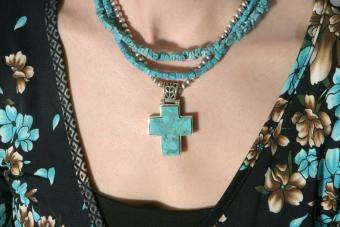
If you are looking for a diamond alternative, you may want to compare moissanite and cubic zirconia to find the perfect substitute. The two synthetic gemstones closely resemble natural diamonds in quality, brilliance, and durability.
Which One Is Better?
Since both moissanite and zirconia are good diamond and gemstone substitutes, the question of which one suits you really depends on your preferences and budget.
| Diamond | Moissanite | Zirconia | |
| Hardness | 10.0 | 9.25 | 8 - 8.5 |
| Brilliance | 2.41 | 2.65 - 2.69 | 2.15 - 2.18 |
| Fire | .044 | .104 | .058 - .066 |
| Price/Carat | $4.5K - $6K | $400 | $20 - $100 |
When comparing the three, it's helpful to know the criteria used to review gems.
- Mohs, or hardness, refers to the hardness of a substance on a scale of 1 to 10. For example, diamonds have the highest Mohs rating, whereas talc, a soft substance, is rated at 1.
- Brilliance refers to how much a gem returns and redirects white light. This can be seen with the "sparkle" a gem has when you look at it. The scale for brilliance is also from 0 to 10, but the lower the number, the more brilliant the gem is.
- Fire is similar to brilliance, but refers to different colors that are refracted by the gem. Think of a prism and how it reflects a rainbow of colors. Like brilliance, it's measured on a 0 to 10 scale with the lower the number, the more fire there is.
Popularity of Moissanite and Cubic Zirconia
People consider diamond alternatives because of affordability, the availability of flawless synthetic stones, and to avoid the purchase of conflict diamonds. The two most popular diamond substitutes are moissanite and cubic zirconia because of their quality and accessibility. Some versions of these manmade gems have more fire than diamonds and do not contain occlusions that commonly occur in natural gemstones. The color possibilities of the two synthetic jewels also make them great substitutes for a variety of natural gemstones.

Moissanite Properties and Details
Moissanite is lab created silicon carbide, or carborundum, inspired by the natural mineral discovered by scientist Dr. Henri Moissan. Jewelry of this material is manmade because natural silicon carbide is extremely rare, and labs can control the results to develop flawless stones that are nearly identical to diamonds. The synthetic jewel now rivals the popular cubic zirconia as an ideal diamond and gemstone substitute for fashion and fine jewelry.
- Moissan discovered the mineral when studying fragments of meteorites in Arizona's Diablo Canyon in 1893. It had the unusual hexagonal crystal structure that only occurs in iron-nickel meteorites.
- It was not until 1995 that lab-created moissanite emerged in the jewelry market.
- Manmade moissanite jewelry comes in a variety of shades, including white, yellow, blue, brown, pink and red.
Cubic Zirconia Composition and History
Cubic zirconia (CZ) is a synthetic crystal form of zirconium oxide (ZrO2), which occurs in nature. Natural ZrO2 is not gem quality and is too rare for commercial profit, but its existence inspired the first experiments to develop CZ. Russian scientists created the first CZ stones for industrial use in laser technology as a cheaper alternative to natural rubies.

- In making cubic zirconia, ZrO2 is heated to high temperatures to create cubic crystals. Combining ZrO2 with various metal oxides can create colors.
- A rainbow of colors is possible, ranging from clear or white to red.
- The versatility of the material led to its use in jewelry.
Moissanite Pros and Cons
Moissanite is considered the closest substitute to a natural or synthetic diamond due to its durability and brilliance. In fact, moissanite registers as harder than both diamonds and CZ on the Mohs Scale of Hardness, which is the most common method of ranking mineral and gemstones hardness.
- The lab-created stones also can have more brilliance, fire, and luster than a diamond or CZ due to the ways its unique hexagonal structure reflects and catches light and disperses color. The cut and shape of the stone can enhance the effect.
- The main problem with moissanite as a diamond substitute is that some clear or white stones may appear to have a slight gray or green tint. If present, this color tinge is sometimes only apparent in bright light.
- Moissanite is also more expensive than CZ jewelry, but some people still consider both types of synthetic gems as cheap fakes despite their high quality.
Cubic Zirconia Pros and Cons
Cubic zirconia has been a standard diamond and gemstone substitute since the 1970s. This substitute is more affordable and more accessible than moissanite.

- The stones come in grades A through AAAAA, with five As indicating the highest quality. Fine grade CZ stones are hard to distinguish from natural diamonds without expert examination.
- The cubic crystal structure can produce a brilliance and fire close to a diamond, depending on the grade and cut of the stone.
- Clear zirconias also come closer to a diamond without the gray/green hue that occurs in some moissanites.
- Hand-cut CZ looks more like real diamonds and often have more brilliance than machine-cut ones. However, they do not have the luster of diamonds or moissanites. The material is also not as hard as diamonds or moissanites, making them less durable. Some stones can also have striations along the crystal.
Choosing Moissanite or Cubic Zirconias Over Diamonds
Depending on your needs, moissanite and CZ may be the perfect alternatives to diamonds. Learning more about these different gemstones and their properties will help you make your final jewelry purchasing decision. Depending on your budget, moissanite and cubic zirconias may be excellent, affordable alternatives to diamonds and look just as stunning.







